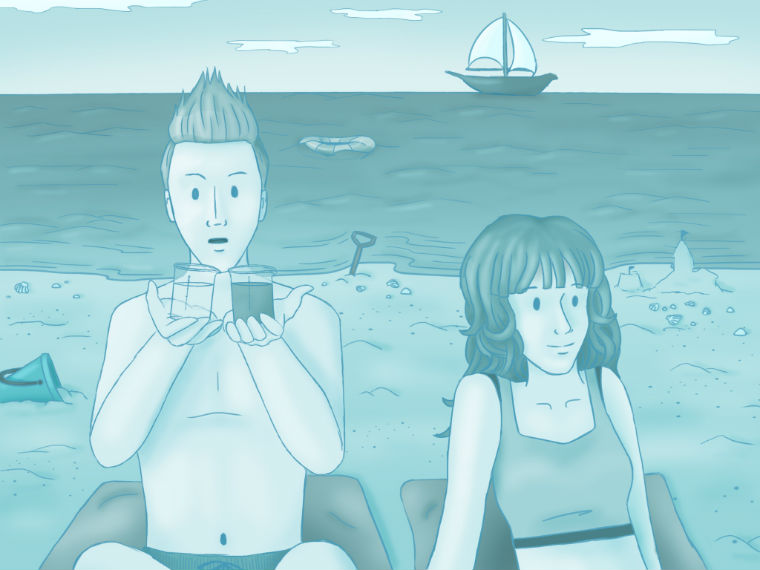Water desalination

“Will you please go bring me some water?” Lily asked Max, playing with her eyelashes in a cute way. Max however, was lying on his back, enjoying the warm sunshine and did not move. Lily insisted, asking him again. He got up and showed her the beautiful, endless sea lying in front of them. “There you go. Just dive in and get as much water as you want”. Then, puting on some extra suntan lotion, he resumed his initial pose.
“Max! I meant some water to drink!” Lily clarified. “I can’t drink sea water. Do you want me to get sick?”
“You won’t get sick, just some hallucinations and then maybe a little brain damage. You’d better not drink a lot of it” he replied in his sweetest voice.
Lily understood she had lost her case, got up, put her hat on protect herself from the glorious Greek sun and headed for the kiosk. She bought some water and returned. Max saw her and sat up, waiting. When she approached, he was disappointed. “You didn’t bring any for me?”
Lily blinked. “Don’t you see the Mediterranean in front of you? Get some water from there if you wish”, she replied.
“That wouldn’t be efficient, you know” Max started, deciding to re-approach one of his favourite topics. “In order to drink sea water, we need to desalinate it, which is not efficient. It costs too much energy”.
“Excuse me; are you living back in the 21st century? When water desalination was not energy efficient” Lily said mocking him. “Nowadays a very big part of the population gets to drink purified or desalinated water”.
Max stood up, launching into a passionate lecture. Water desalination, he started, is way more expensive than getting fresh water from rivers, or ground water or even from recycling water. However, due to many people being unable to access fresh water sources in the past, scientists had to search for drinkable water where water was plentiful: in the sea.
Using membranes, scientists were filtering water for a long time. All membranes are basically materials with tiny holes that block the larger particles while allowing the smaller ones to pass through. If the holes are tiny enough they may allow only the water molecules to pass and keep everything else out. This method was also able to separate toxic particles from the water. But it was an expensive way to conduct desalination.
Boiling salt water and collecting the steam was another method used to separate the salt and other contaminants. But this was inefficient too.
Lily drank some more water from her bottle and asked him if he knew that human beings are made of more than 70% water. Max didn’t understand where she was going with the question and stopped talking for a moment.
Lily told him that once more, nature had already found the solution to the problem beforehand. Biomimetic membranes! Humans, animals and plants are made of cells. The outer part of each cell is a membrane. And in a variety of different animal and plant cells, these membranes contain a special type of protein called aquaporin.
Water can flow rapidly through the cell membrane thanks to aquaporins, while other molecules cannot. Aquaporins selectively bind to water molecules to let only them through. This type of water transport is very efficient and it has been used to improve water desalination membranes and reduce their operational and energy costs.
Max was both impressed and thirsty. He complimented her and tried to take the bottle from her hands at the same time. Lily was quicker though.
“If you wish to drink water, you will either walk to the kiosk to buy some or start your personal desalination business here, on the beautiful island of Crete. Is that clear?” she asked.
